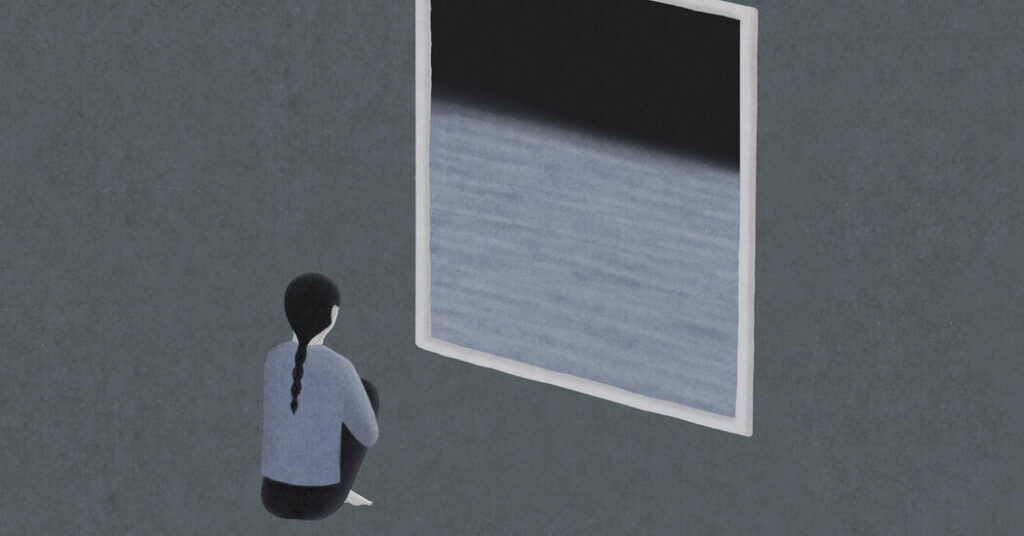In his nearly 40-year career as a psychiatrist, Dr. Igor Galynker has lost three patients to suicide while they were under his care. None of them had told him that they intended to harm themselves.
In one case, a patient who Dr. Galynker had been treating for a year sent him a present — a porcelain caviar dish — and a letter, telling Dr. Galynker that it wasn’t his fault. It arrived one week after the man died by suicide.
“That was pretty devastating,” Dr. Galynker said, adding, “It took me maybe two years to come to terms with it.”
He began to wonder: What happens in people’s minds before they kill themselves? What is the difference between that day and the day before?
Nobody seemed to know the answer.
Suicide rates continue to rise; it is now the third leading cause of death worldwide among those 15 to 29. But despite decades of research into suicide prevention, it is still very difficult to know whether someone will try to die by suicide. The most common method of assessing suicidal risk involves asking patients directly if they plan to harm themselves. While this is an essential question, some clinicians, including Dr. Galynker, say it is inadequate for predicting imminent suicidal behavior. A better solution, they say, is to identify and treat the symptoms that lead to a suicidal state of mind: a condition they call suicide crisis syndrome, or S.C.S.
Dr. Galynker, the director of the Suicide Prevention Research Lab at Mount Sinai in New York City, has said that relying on mentally ill people to disclose suicidal intent is “absurd.” Some patients may not be cognizant of their own mental state, he said, while others are determined to die and don’t want to tell anyone.
He and his team have now spent more than 15 years researching S.C.S., and have submitted an application to add it to the mental health diagnostic manual used by clinicians, the D.S.M.-5, as a new diagnosis. It is a lengthy process that can take years. But Dr. Galynker says it is their best shot at getting clinicians to take S.C.S. symptoms seriously.
A Tragic Consequence of Severe Psychiatric Illness
Clinicians often look for suicidal ideation and behavior when determining suicide risk. The Columbia Protocol, an evidence-based suicide risk assessment used around the world, asks patients to disclose whether they have been thinking about, intending or planning suicide. Patients receive a score of 0 — the lowest possible risk — if they deny ideation, unless they admit to either having tried or planned to end their life in the past.
It can be difficult for people to share suicidal thoughts. According to one literature review, about half of those who died by suicide had denied having suicidal intent in the week or month before ending their life.
Eight years ago, Dr. Fred Miller, an emergency psychiatrist in the Chicago area, was distraught when a few patients who had been treated in his department killed themselves, all within a two-month time span.
The patients had denied being suicidal during their most recent visits at NorthShore University HealthSystem, now Endeavor Health, where Dr. Miller was working as the chair of psychiatry.
The uptick in suicides could have been viewed as a statistical anomaly, a tragic consequence of severe psychiatric illness. But he didn’t see it that way.
“It was a sort of déjà vu,” he said.
In 2013, several years earlier, Dr. Miller’s 24-year-old daughter Alyssa had died by suicide. He had pleaded with her psychiatrist to admit her to a hospital — she was agitated and kept “thinking about thinking.” She was also having difficulty sleeping and had become withdrawn. But Alyssa’s doctor refused to hospitalize her, partly because she had denied feeling suicidal.
Days later, she was dead.
A ‘Persistent and Intense Feeling of Frantic Hopelessness’
Suicide crisis syndrome is considered the last of a four-stage mental progression toward suicide that often begins with ongoing problems like alcoholism and the lingering effects of childhood trauma. When these issues are combined with character traits like perfectionism or impulsivity as well as stressful life events and thoughts of being a failure and a burden, it creates a perfect storm.
To be diagnosed with S.C.S., Dr. Galynker said, patients must have a “persistent and intense feeling of frantic hopelessness,” in which they feel trapped in an intolerable situation.
They must also have emotional distress, which can include intense anxiety; feelings of being extremely tense, keyed up or jittery (people often develop insomnia); recent social withdrawal; and difficulty controlling their thoughts.
By the time patients develop S.C.S., they are in such distress that the thinking part of the brain — the frontal lobe — is overwhelmed, said Lisa J. Cohen, the supervising psychologist at Mount Sinai Beth Israel who is studying S.C.S. alongside Dr. Galynker. It’s like “trying to concentrate on a task with a fire alarm going off and dogs barking all around you,” she added.
Although S.C.S. is not yet an official diagnosis, the syndrome is being used to assess suicidality in select health centers in the United States as well as in other countries, including Israel and Norway.
Dr. Miller, the psychiatrist at Endeavor Health in Chicago, first learned about S.C.S. after the patient suicides. He then led efforts to screen every psychiatric patient for S.C.S. at his hospital system. In trying to implement the screenings there have been “fits and starts,” he said.
“It’s like turning the Titanic,” he added. “There are so many stakeholders that need to see that a new approach is worth the time and effort.”
Ultimately, based on results from a sampling of practitioners from Dr. Miller’s hospital system and other institutions, the clinicians reported that S.C.S. was useful in assessing near-term suicide risk. And in 2024, Dr. Miller and his collaborators published a study showing that when E.R. patients were diagnosed with S.C.S., and admitted to the hospital with moderate to severe suicidal ideation, they were about 75 percent less likely to be readmitted to the hospital than patients with the same level of suicidal ideation who did not have S.C.S.
The results suggested that those with S.C.S. benefited from “immediate, high-intensity treatment,” Dr. Miller said.
‘Dropped Into This Black Hole of Sadness’
Marisa Russello, 39, first learned about S.C.S. several years ago while working as a consultant in Dr. Galynker’s lab, four years after she tried to take her life.
The syndrome “really put my experience into words,” she said.
On the night that she nearly died, Ms. Russello wasn’t initially planning to harm herself. Life had been stressful, she said. She felt overwhelmed at work. A new antidepressant wasn’t working. She and her husband were arguing more than usual. But she wasn’t suicidal.
She was at the movies with her husband when Ms. Russello began to feel nauseated and agitated. She said she had a headache and needed to go home. As she reached the subway, a wave negative emotions washed over her.
“I feel like my husband is going to divorce me,” she thought. “I’m too much for him. I can’t go on without him.”
By the time she got home, she had “dropped into this black hole of sadness.”
And she decided that she had no choice but to end her life. Fortunately, she said, her attempt was interrupted.
Her decision to die by suicide was so sudden that if her psychiatrist had asked about self-harm at their last session, she would have said, truthfully, that she wasn’t even considering it.
Now, she said, when she finds herself entering the same state of mind — restless, ruminative, hopeless — Ms. Russello seeks help right away by confiding in her husband.
“It’s important that people, even lay people, recognize what this is,” she said.
‘A Set of Circumstances and Symptoms’
Dr. Paul S. Appelbaum, a professor of psychiatry at Columbia University who has reviewed proposed additions to the D.S.M.-5., wonders whether diagnosing patients with S.C.S. could have a “stigmatizing effect.”
“What does that do to your insurability?” Dr. Appelbaum asked. Is it something you’d have to reveal when you apply for a professional license? Should people be diagnosed if they deny suicidal intent and insist that they don’t plan to harm themselves?
Dr. Appelbaum also questioned whether S.C.S. was truly a mental disorder, asking whether it could be better described as “a set of circumstances and symptoms” that help predict suicidal behavior.
The latest evidence, much of which has been funded by the American Foundation for Suicide Prevention points toward S.C.S. as a unique syndrome, Dr. Galynker said. But he and his colleagues have not yet obtained the funding for the gold standard in research: a large randomized controlled trial.
For Dr. Galynker and his collaborators, there is an urgent need to more accurately identify and treat the people who are most at risk of ending their lives.
“You don’t come to the emergency room with crushing chest pain and just wait,” Dr. Miller said. “You have to treat that.”
The same should be true of the suicidal state of mind, he added.
If you are having thoughts of suicide, call or text 988 to reach the 988 Suicide and Crisis Lifeline or go to SpeakingOfSuicide.com/resources for a list of additional resources.
Christina Caron is a Times reporter covering mental health.
The post When a Person in Distress Denies Being Suicidal, Should They Be Believed? appeared first on New York Times.




